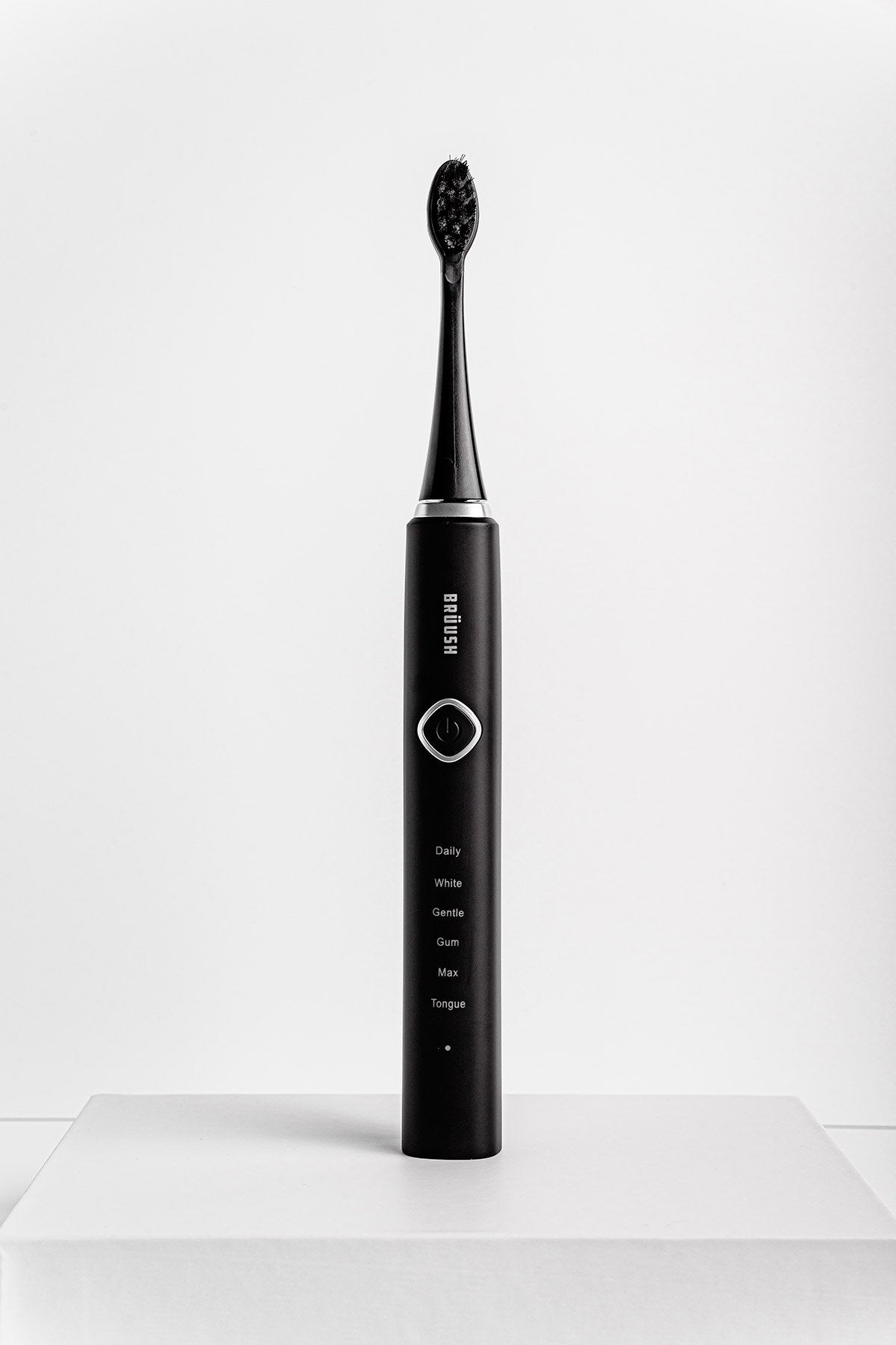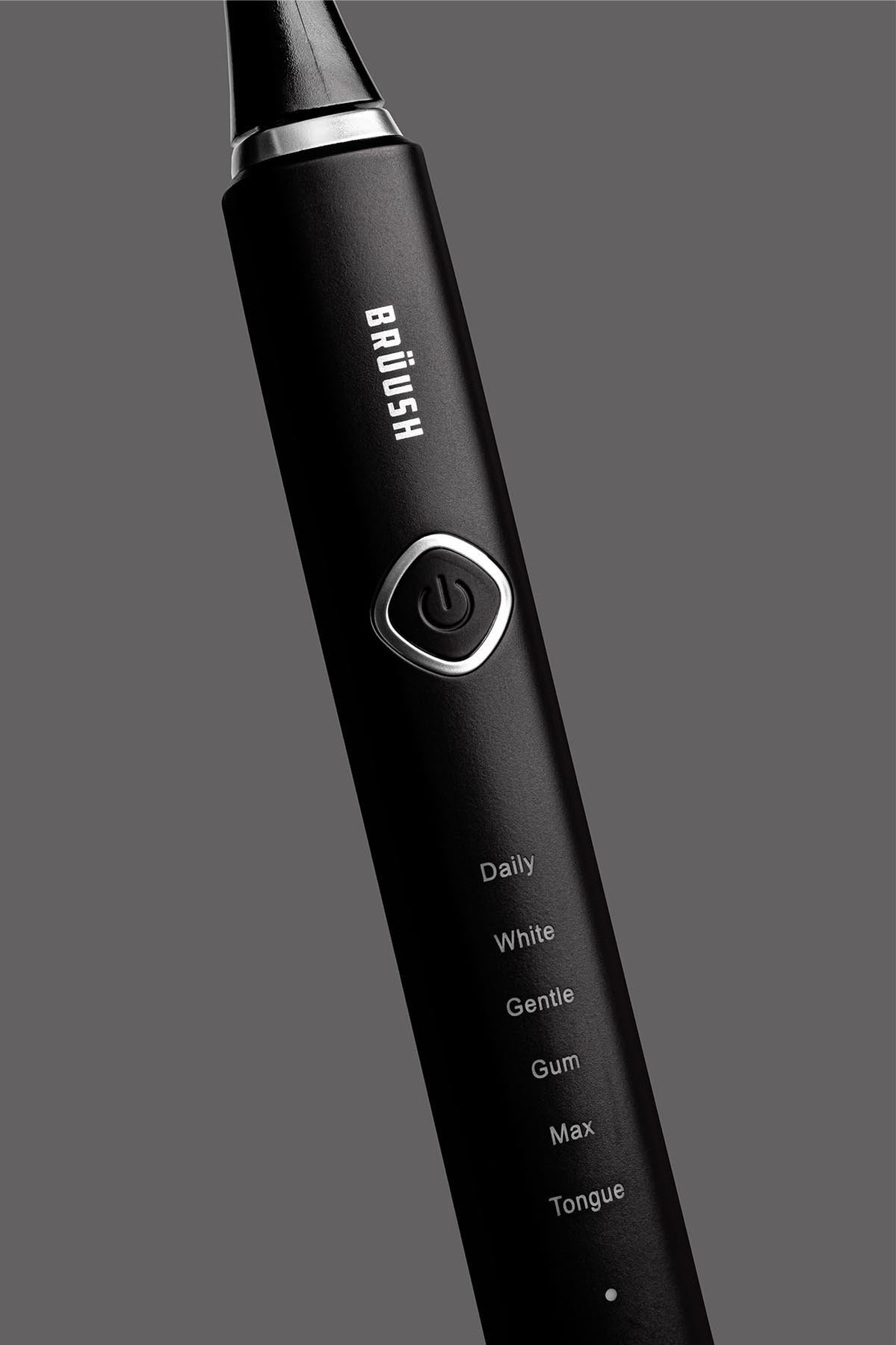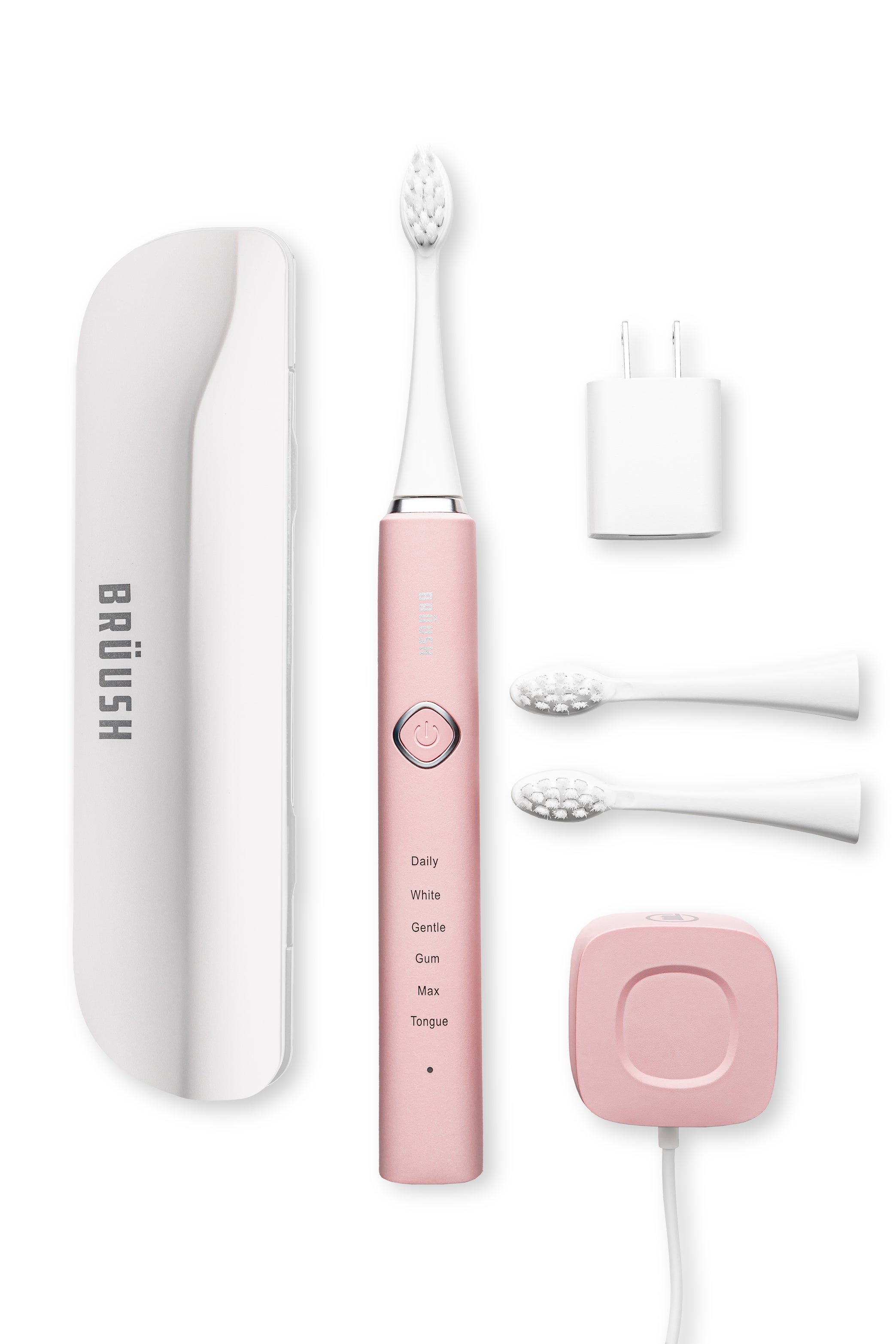You know the saying, “Your teeth are only as clean as your toothbrush”? If you haven’t, that’s probably because it’s not actually a saying, (but it should be). Cleaning your teeth with a dirty toothbrush is like drying your face with a grimy dish towel—it’s just not right. The thing is, because you slather your toothbrush in toothpaste, there can be this assumption that it’s clean. Don’t be fooled!
Ready for some yucky facts? According to a study by the University of Manchester, the average toothbrush can contain over 10 million bacteria, some of which are definitely the bad kind—like E. coli and Staph.
When it comes to electric toothbrushes, because in most cases the brush head is removable, there are more places for dirt and gunk to get stuck. It also means that you’re only tossing away the brush head, whereas the toothbrush handle stays with you for years and years to come. All of this to say, an electric toothbrush can get pretty dirty, so make sure that you’re properly cleaning it before and after every use.
In this post we’re covering:
- The basic hot water toothbrush rinse
- The benefits of a UV toothbrush sanitizer
- How to properly clean your electric toothbrush head
- How to tell when it’s time to replace your toothbrush head
- 6 ways to keep your toothbrush clean overtime
- How to prevent gunk from piling up on the toothbrush base and handle
Hot Water Before & After Each Use
One of the best and most simple ways to ensure that your power toothbrush stays sparkling clean is to rinse it under hot water. You don’t need to use boiling water from the kettle, or anything like that. Just simply run your tap water until it’s a bit steamy, and then place your toothbrush underneath to help lift, rinse, and kill any harmful bacteria.
The key here is to rinse it both before and after you use your toothbrush! This also helps to remove any food particles and bits from your brush head before you leave it out to dry.
Use a UV Toothbrush Sanitizer
If you want to take your toothbrush cleaning to the next level, try a UV toothbrush sanitizer. Using UV disinfecting devices is optional and the ADA or CDC doesn’t claim that it’s necessary. That being said, the results show it can be an effective method for removing bacteria, viruses, and yeasts on toothbrushes.
In a study comparing rising toothbrushes with cold water vs rinsing then using a UV sanitizer, they found that “the Violight toothbrush holder reduced total CFU [colony forming units, such as bacteria] by an average of 86%.” It’s important to note that the study was not comparing toothbrushes rinsed under hot water, which is more effective at killing bacteria.
We only recommend buying one of these products if you’re looking for an extra good clean, and have the money to spend.
Fun fact: there are also UV sanitizers for your phone, which is also known to collect some really nasty bacteria.
Cleaning Your Electric Toothbrush Head
Soak Toothbrush Heads in Antibacterial Mouthwash or Peroxide
Besides rinsing your toothbrush under hot water, there are a few other methods that you can use to help remove gunk and grime from your toothbrush head. We recommend only using these thorough rinses once a week, max. Don’t overdo it as these methods can actually break down your toothbrush heads much quicker!
Antibacterial mouthwash. Although using mouthwash to clean your toothbrush is not 100% necessary, it can be used sparingly to give your brush head an extra clean. Follow these 4 steps:
- Grab your antibacterial mouthwash.
- Detach the brush head from your toothbrush handle, and put it into a bowl/container.
- Pour the mouthwash over your brush head until it’s completely submerged, and leave for 3-5 minutes.
- Rinse your toothbrush head under hot water, and leave it to dry upright.
Hydrogen peroxide. This chemical compound is widely known for disinfecting wounds, but it can also be used on your toothbrush head for the same purpose—killing microorganisms, including yeasts, fungi, bacteria, viruses, and more! Here’s how to clean your toothbrush with hydrogen peroxide:
- Get yourself a bottle of 3% hydrogen peroxide.
- Detach the brush head from the handle, and place it into a bowl/container.
- Pour the hydrogen peroxide over the brush head until it’s completely submerged, then let it sit for at least 5 minutes.
- Rinse the brush head under hot water, and then leave it to dry in an upright position.
When Should I Replace my Toothbrush Head?
Even if you keep your toothbrush clean and use any of the above methods on a regular basis, there will still come a time when you need to replace your electric toothbrush head. The ADA and CDC recommend that you change out your old brush head for a new one every 3-4 months!
Here are a few reasons why you may want to replace that brush head before the recommended time:
- The bristles are worn out or damaged, making it less effective at cleaning between your teeth.
- Either yourself or someone who has used your toothbrush has a contagious disease, such as strep throat or COVID.
- Someone else has used your toothbrush! If it’s a family member and they don’t appear to be sick or have any other oral ailments, then a good mouthwash/hydrogen peroxide soak should be fine.
How do I Keep my Toothbrush Clean?
1. Let Your Toothbrush Air-dry
One of the easiest and most effective things you can do to keep your toothbrush clean, is letting it dry out properly after each use. There are also a few other tips for letting it dry-out—these include:
- Standing it upright so any residual water can drip off.
- Keeping it clear from other contaminants or items, including a partner or family members toothbrush.
- Leaving it out in the open, not putting a cap on it or putting it into a case—those should really only be used when travelling.
2. Change Your Toothbrush Head Every 3 Months
One of the best ways to keep your power toothbrush clean is by changing out the brush head for a new one every 3 months. Most electric toothbrushes will come with a few extra replacement heads.
If you’re using a Bruüsh, you can even subscribe to our brush head refill plan which sends you 3 new brush heads every 6 months. By using our subscription service over a one-time purchase, you save 25%.
3. Don't Share Your Toothbrush
Just like you wouldn’t share your underwear with a friend or family member, you shouldn’t share your toothbrush either. That was a weird example, but you get the point. Sharing is caring, but there are definitely some things in life that should be kept for yourself only.
When you share your toothbrush with someone else, you’re then introducing all of their bacteria (healthy or not) onto the same brush. Although kissing may not seem that different in regards to spreading bacteria, removing your toothbrush from the equation just ensures that there’s one less touch point—it’s low risk. Say no to bacterial contamination!
4. Use a Travel Case When Traveling (& Don't Forget to Clean it!)
Lastly, you’ll want to keep your electric toothbrush clean on-the-go, not just at home. The best way to do this is by safely and securely moving your toothbrush from point A to point B without putting it into contact with other contaminants. We recommend a travel case, or at the very least, a ziplock plastic baggie. A travel toothbrush case should have a hard exterior which prevents the toothbrush or bristles from becoming damaged. That way when you throw it into your suitcase, it’s safe and sound.
Every Bruüsh toothbrush comes with a sleek travel case just for this purpose!
5. Consider a Toothpaste Dispenser
Every time you use toothpaste from a tube, you’re swiping your brush against it in some way. To reduce this contact, a toothbrush dispenser can help. These work much like a public bathroom soap dispenser—you put your toothbrush underneath and it will automatically dispense the toothpaste onto your brush.
BONUS: It can also help with putting the accurate amount of toothpaste onto your brush by regulating how much comes out.
These dispensers are actually quite affordable and easy to find on Amazon or even Walmart.
6. Clean After Each Use
Your toothbrush is putting in a lot of hard work every day and night! As mentioned above, you need to thoroughly clean your toothbrush before and after you use it. The best way to do this is by running it under hot water for a few minutes to rinse off any leftover germs and toothpaste.
How do I Keep my Electric Toothbrush Base and Handle Clean From Gunk?
If you follow the recommended tips and cleaning methods above, you should be able to keep that toothpaste gunk and debris from piling up on your electric toothbrush. But, if you’re still finding it’s getting a bit crusty (sorry, but the description is accurate), then here’s what to do:
- Remove the brush head from the handle, and submerge it into a small bowl of hot water.
- Run the toothbrush handle under hot water to help loosen up any gunk.
- Take a cotton swab or cloth, dip it into a mild cleanser, and gently wipe the area down (you shouldn’t need too much pressure to lift it off).
- Use this same process for the toothbrush head.
- Once all gunk is removed, attach the brush head back and run the toothbrush under hot water again.
- Place it in an upright position and let it dry out fully!
Instead of using just plain water for the brush head, you can of course use antibacterial mouthwash, hydrogen peroxide, or a mixture of ½ cup of water, 2 tablespoons of white vinegar and 2 tablespoons of baking soda. Some sites also recommend a bleach solution, but we think that it’s best to keep it safe and not introduce any bleach onto something you put into your mouth.
And there you have it, folks! This post was packed full of tips on how to keep both electric and manual toothbrushes clean. There are many methods and ways to go about it, but the most important thing is to just get into a routine. Rinsing with hot water before and after brushing is the easiest one to stick to, anything else is just extra. After all, your toothbrush is going through a lot of work to remove plaque and make your teeth sparkly—put in a little bit of extra time to make sure it’s clean, too.








